|
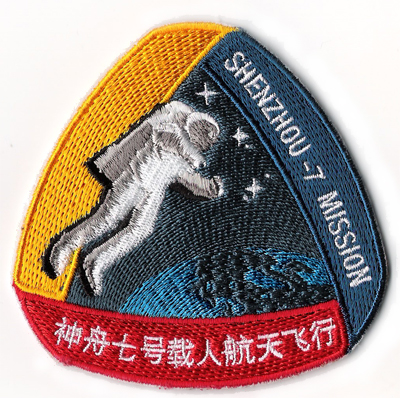
The Shenzhou-7 mission patch (81 x 80 mm).
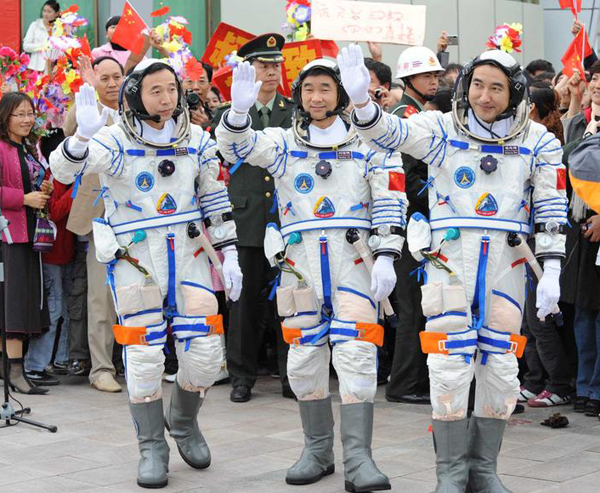
The Shenzhou-7 crew of Jing Haipeng, Liu Buoming and Zhai Zhigang leaving for the launchpad.
The Shenzhou-7 spacecraft carrying the three crewmembers was launched September 25, 2008, by a Long March 2F (CZ-2F) rocket from the Jiuquan Satellite Launch Center at 21:10 CST. The mission lasted three days, after which the craft landed safely in Siziwang Banner in central Inner Mongolia on September 28, 2008, at 17:37 CST.
On September 27, Zhai Zhigang, wearing a Chinese-developed Feitian space suit, conducted a 20-minute space walk, the first ever for a Chinese astronaut. Leaving the orbital module in a head-first position at around 16:43 (08.43 GMT) and wandered around the orbital module, retrieved experiment samples and waved the Chinese flag in space. The space walk lasted about 20 minutes, with Zhai returning to the orbital module at 17:00. Liu Boming, wearing a Russian Orlan-M suit, stayed in the airlock in the orbital module to provide help if necessary. Liu also conducted an EVA, standing up at 08:58 UTC to hand Zhai a flag. The third astronaut, Jing Haipeng remained in the re-entry module to monitor the general situation of the spacecraft. By 09:00 UTC both astronauts were back inside and the hatch was closed.
Scientists conducted a solid lubricant exposure experiment during the mission. A piece of equipment the size of a book was installed on the outside wall of the orbital module, and was later retrieved during the space walk, after having been exposed in the space for more than 40 hours. The experiment was aimed to study a lubricant which will be used for space-based moving components in future space facilities.
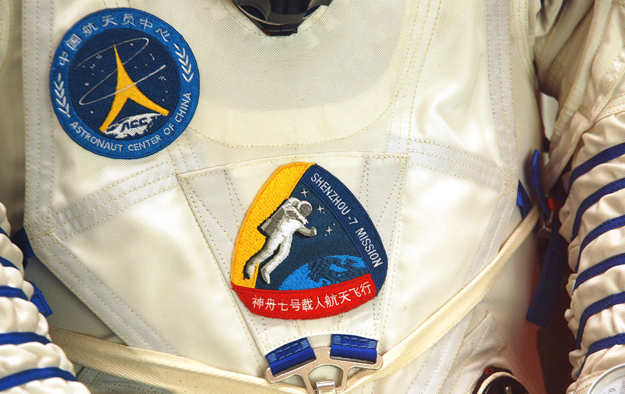
Zhai Zhigang's spacesuit displaying the mission patch and the Astronaut Center of China.
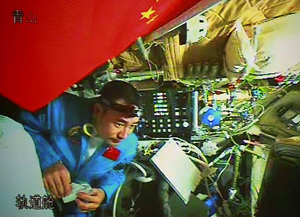 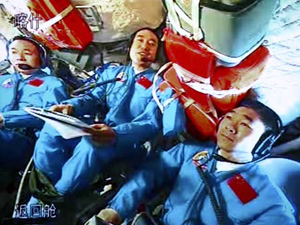
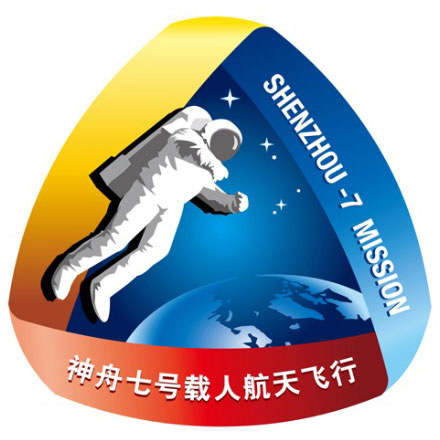 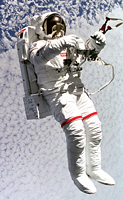
The SZ-7 patch is more or less triangular in shape and shows the main goal of the mission; China's first EVA. Art from a first day cover is shown left.
The spacewalking figure seems to be based on a photo taken of Mark Lee during his STS-64 spacewalk, testing the SAFER unit (shown right).
The Earth shows a mirror image of Scandinavia, Greenland an the north coast of Canada, a peculiar choice.
Three stars represent the three crewmembers; on closer inspection the middle star is accompanied by a smaller second star, like the bottom one is flanked by two smaller ones. These most likely symbolize the three manned Shenzhou missions, featuring one, two and three taikonauts respectively.
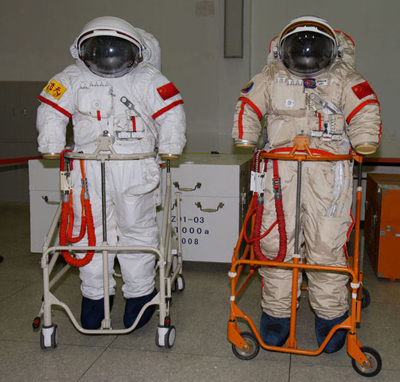 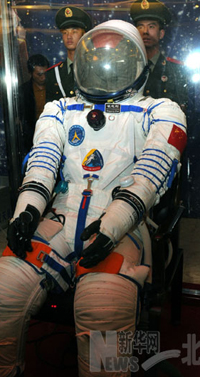
Left: the two suits used during the EVA; the Chinese 'Feitian' (which means 'flying in space') suit and a Russian-made Orlan; right; Zhai's suit at an exhibition in October 2008.
The Feitian spacesuit is similar to the Orlan-M in shape and volume and are designed for spacewalks of up to seven hours, providing oxygen and allowing for the excretion of bodily waste. According to Chinese media reports, spacesuit materials with such features as fire and radiation resistance were developed by several civilian corporations and national institutes. Each suit was reported to have cost 30 million RMB (about 4.4 million USD).
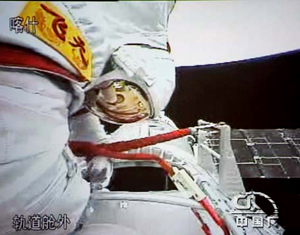 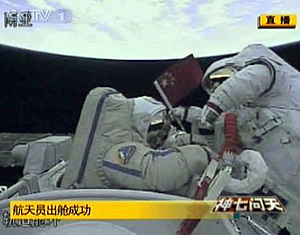
Left; Zhai Zhigang working outside the Shenzhou-7 OM on China's first EVA. Note the yellow 'Feitian' patch on his shoulder (see original, heavily embroidered patch below). Right: Liu Buoming assists Zhai, wearing the Russian-provided Orlan suit. Note the Shenzhou-7 patch on his shoulder). Both suits were left inside the OM before the crew landed; only the gloves of Zhai's EVA suit were returned to Earth (below right).
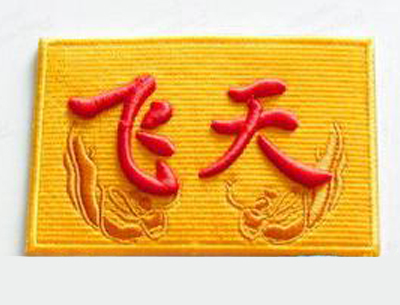 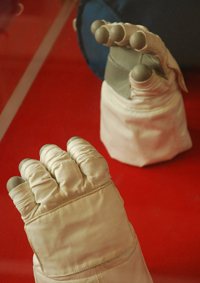
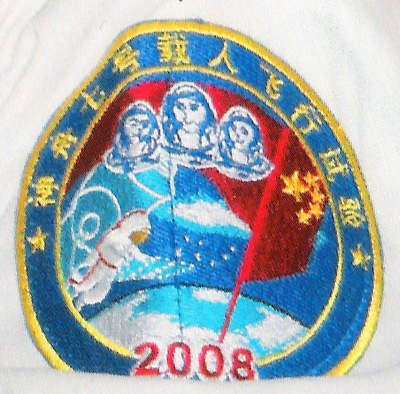
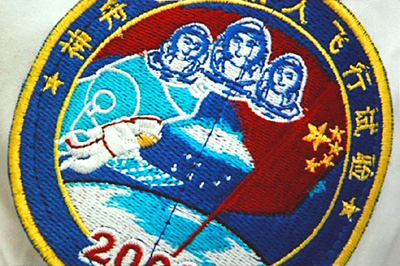
Two views of a Shenzhou 7 patch worn by technicians during spacecraft preparation at the launch site.
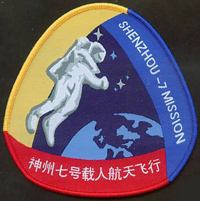 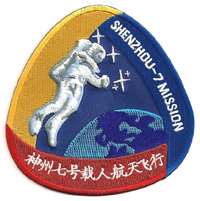 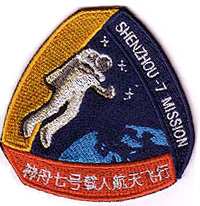
Left: this crude Chinese reproduction of the Shenzhou-7 patch became available on eBay not long after the mission. Middle; unfortunately, Stewart Aviation based their reproduction on this Chinese example. Right: this reproduction, produced by Jorge Cartes, is available through this site.
 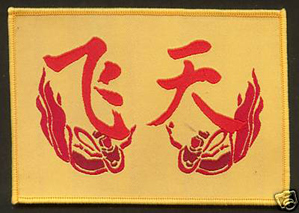
The same Chinese source came up with these ACC and Feitian patch reproductions.
Shenzhou-6| China Index | Shenzhou-8
www.spacepatches.nl
|



















